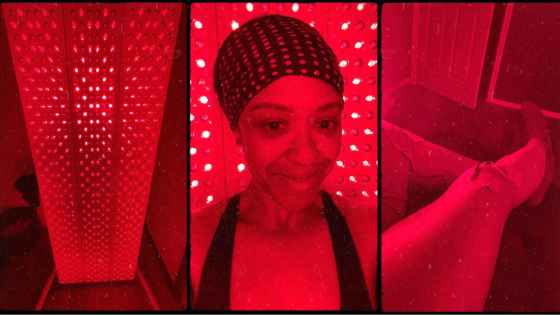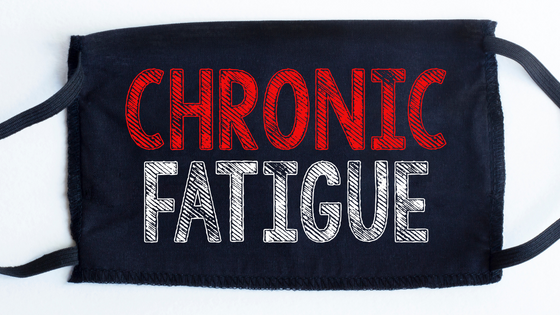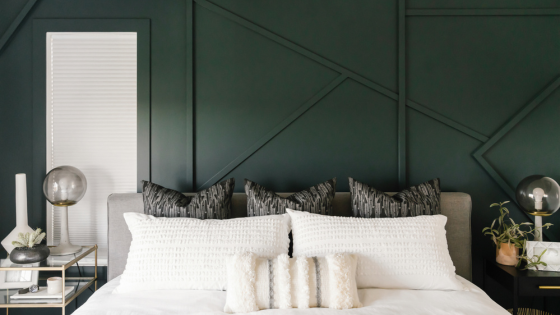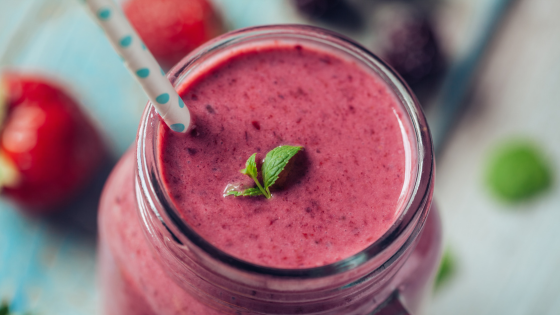You have been working on our diet and doing well. You are working towards a healthy diet and clean eating. You are even working toward goals like 5k runs and staying consistent with your group exercise program. The problem is you have been told by your doctor that your sugar levels are still not in a good range. You have removed soda, processed sugars, and sweets. Now you are left wondering where the sugar is coming from.
It is no surprise that chocolates, fizzy drinks, sweets, and cakes are loaded with added sugar. But there are other culprits that you might not associate with added sugar. These culprits are the foods that are packed with large amounts of HIDDEN sugars.
Sugar has long been a controversial ingredient, often associated with various health issues when consumed in excess. We all know that cutting back on sugar is essential for a healthier lifestyle. As health-conscious individuals, we have become accustomed to reading food labels and avoiding products that list sugar as an ingredient. However, it’s important to be cautious because those lists can be deceptive, obscuring the true presence of sugar.
What many of us fail to realize is that sugar comes in numerous disguises, making it challenging to identify its presence in processed foods. Simply because sugar isn’t prominently listed at the top doesn’t mean the food or beverage you’re considering is sugar-free.
Why Are Sugars Being Hidden?
Food manufacturing companies have become wise about the outcry of added sugar by health practitioners, and with clever marketing, have mastered the art of disguising the sugar in their products so that consumers do not know how much sugar they are really eating.
They add sugar into foods to enhance the taste, especially in reduced fat foods, as foods without fat are bland, and do not taste so good. This means that foods you may believe to be healthy because they are labeled low fat, are actually worse for you as they are loaded with added sugar – which keeps you hooked and going back for more.
In the US today, adults are consuming around 22 teaspoons of sugar a day, way over the American Heart Association’s recommendations, who recommend that most women should consume no more than 6 tsp. or 100-calories a day of sugar and that most men should consume no more than 9 tsp. or 150 calories a day of sugar.
This amount of excessive sugar consumption can lead to a number of health issues including fatty liver disease, leaky gut, metabolic diseases, diabetes, cancer, high blood pressure and even Alzheimer’s or dementia. This is why it is so important for us to know what hidden sugars are and how to detect them.
Unveiling the Sugar Mystery
Sugar exists in various forms, ranging from less harmful to downright unhealthy. It might surprise you to discover significant amounts of sugar in foods labeled as “healthy,” “low fat,” or “sugar-free,” such as yogurt or energy bars.
To complicate matters, you’ll come across up to 61 different names for sugar on various packages and labels. Yes, you read that right—61! Sometimes, a single product will list three of these names as the fifth, sixth, and seventh ingredients. Don’t be fooled by this strategic placement. When combined, these slightly different forms of sugar may outweigh all the ingredients listed before them.
What Are Hidden Sugars?
So, what are hidden sugars, you ask? They are syrups and sugars included in beverages or foods during their process or preparation period. Added sugars don’t include those naturally occurring sugars such as you will find in fruits and natural milk. If you are wondering about how much sugar is in your foods, look at that labeling and take note of the ingredients that end with “ose” – those are typically the sugar ones.
Equipping Yourself Understanding Sugar’s Aliases
To become a savvy consumer, it’s crucial to familiarize yourself with the most common forms and names of sugar. By doing so, you’ll be better equipped to distinguish the good from the bad when it comes to your food choices.
The following are some of sugar’s aliases, complete with distinguishing characteristics:
Sucrose: The Classic Sugar
Let’s start with the most obvious name on the list – sucrose. Found naturally in sugarcane and sugar beets, sucrose is commonly known as table sugar. It consists of glucose and fructose molecules bonded together, providing a sweet taste in various foods and beverages.
High-Fructose Corn Syrup: The Controversial Sweetener
High-fructose corn syrup (HFCS) is a widely used sweetener derived from corn starch. This syrup undergoes enzymatic processes that convert some of its glucose into fructose, resulting in a high fructose content. HFCS gained notoriety due to its presence in many processed foods, such as soft drinks, candies, and baked goods. Its consumption has been linked to obesity and various metabolic disorders.
Fructose: The Fruit Sugar
Fructose, often referred to as fruit sugar, occurs naturally in fruits and honey. While fructose in its natural form is not harmful, excessive consumption of added fructose can have negative health effects. It is crucial to be mindful of the fructose content in processed foods, especially those marketed as healthy alternatives or fruit-flavored products.
Glucose: The Vital Energy Source
Glucose, also known as dextrose, is a simple sugar that serves as the primary source of energy for our bodies. While glucose itself isn’t harmful, excessive intake can lead to adverse health effects. It is worth noting that many refined carbohydrates, such as white bread and pasta, quickly break down into glucose during digestion.
Lactose: The Milk Sugar
Lactose is the natural sugar found in milk and dairy products. While it occurs naturally, some processed foods may contain added lactose as a sweetener. Individuals with lactose intolerance should be aware of its presence in food products to avoid discomfort or adverse reactions.
Maltose: The Grain Sugar
Maltose is a sugar formed from two glucose molecules bonded together. It is commonly found in malted grains, such as barley, and is often used as a sweetener in brewing and baking. While maltose is not as prevalent in processed foods as other sugars on this list, it’s still worth being aware of its presence in certain products.
Alternative Names for Added Sugars
Beyond the naturally occurring sugars, added sugars are the ones we need to be most cautious about. Food manufacturers often use alternative names for added sugars to make their products seem healthier or to confuse consumers. Some common aliases for added sugars include:
- Corn syrup
- Dextrose
- Fruit juice concentrate
- Barley malt syrup
- Molasses
- Rice syrup
- Evaporated cane juice
- Cane sugar
- Coconut sugar
- Agave nectar
Sugar’s Many Substitutes
Sugar, in its various forms, has gained a notorious reputation due to its negative impact on our health. Processed sugar, in all of its forms, provides absolutely nothing good for you, and can even be detrimental to your health. It is basically empty calories with a whole range of unwanted side effects. From contributing to weight gain to increasing the risk of chronic diseases, the excessive consumption of processed sugar is something we should all strive to avoid.
Thankfully, there are several natural sweeteners that can satisfy our cravings for sweetness while providing some health benefits. The following natural sweeteners, on the other hand, will satisfy your sweet tooth and your body’s needs. It’s important to remember though, that sugar should only be consumed in moderation. Your body only needs and responds to very small amounts of even the most natural of sugars.
Honey: Nature’s Sweetener
Honey is a delicious and versatile natural sweetener with a rich taste and numerous health benefits. Produced by bees from the nectar of flowers, honey contains small amounts of vitamins, minerals, and antioxidants. Its natural enzymes and antimicrobial properties make it a better alternative to processed sugar. It can be used as a sweetener in beverages, baked goods, and dressings.
Maple Syrup: The Liquid Gold
Maple syrup, derived from the sap of maple trees, is another popular natural sweetener. It has a distinct flavor and is a rich source of antioxidants, vitamins, and minerals like manganese and zinc. Choose 100% pure maple syrup without added sugars or artificial ingredients to enjoy its natural goodness. Drizzle it over pancakes, waffles, or use it in marinades and glazes for a delightful sweetness.
Stevia: The Zero-Calorie Option
Stevia is a plant-based sweetener extracted from the leaves of the Stevia rebaudiana plant. It is a zero-calorie alternative to sugar and does not raise blood sugar levels, making it suitable for individuals with diabetes or those watching their calorie intake. Stevia is intensely sweet, so a little goes a long way. Look for high-quality stevia products without additional fillers or additives.
Coconut Sugar: The Natural Sweetener
Coconut sugar, derived from the sap of coconut palm trees, is a popular alternative sweetener. It retains some of the nutrients found in coconut palm, including iron, zinc, and antioxidants. Coconut sugar has a caramel-like flavor and can be used in baking, cooking, and beverages as a one-to-one replacement for white or brown sugar.
Dried Fruit: Nature’s Candy
Dried fruit offers a naturally sweet taste and provides additional nutritional benefits. Fruits like dates, raisins, and figs can be used as sweeteners in baking or added to smoothies and desserts. While dried fruit contains natural sugars, it is also packed with fiber, vitamins, and minerals. However, remember to consume dried fruit in moderation as they are more concentrated in sugar content compared to fresh fruit.
Fruit Jams: Flavorful Spreads
Fruit jams made from whole fruits without added sugars can be a delightful and healthier alternative to processed sugar. Look for brands that use minimal ingredients and avoid artificial sweeteners. Spread these jams on toast, mix them into yogurt, or use them as a filling in homemade pastries for a naturally sweet treat.
Natural Fruit Purees and Juices
Pureed fruits like pineapple and banana, as well as their juices, can add natural sweetness to recipes without the need for processed sugar. Use these purees or juices in smoothies, baked goods, or sauces to enhance the flavor and provide natural sweetness. Just be mindful of the overall sugar content and consume them in moderation.
Where Are Hidden Sugars?
The top hidden sugars are:
- Sodas
- Energy and sports drinks
- Candies, desserts, and snakes like pies and cakes, doughnuts, pastries
- Sweetened fruit drinks and teas, like fruit punches and iced teas
- Dairy products like yogurts and ice cream
It might seem obvious to you that these are the typical sources of where you could expect to find sugar but believe it; they are far from the only foods today responsible for the huge sugar consumption in the world.
Don’t be fooled by the labeling that has “natural” written all over it. Some manufacturers will label their foods with things like “cane juice as added sweetener” or words like ‘fruit juices’, or ‘molasses’, or ‘beet sugar’. Again, These are all types of sugars too. You will find extra sugar added to thousands of foods and beverages in your local grocery store. These include organic and natural foods that you will find even in health shops.
Below are some so-called “health foods” that have tons of sugars packed into them that you might not have known about:
- Your “healthy” cereals, such as oats
- Even “whole grain” bread, but all packaged bread
- “Healthy” granola type bars
- “Health” drinks, coffees, blended teas juices and teas
- Most protein and energy bars and drinks are not healthy snacks. They may contain vegetable protein and some vitamins, but they are also exceedingly rich in refined flour and added sugar products.
- Sweetened dairy products like flavored and frozen yogurts, low-fat ice cream or flavored kefir
- Sauces, dressings, and condiments like bottled tomato sauces, relishes, ketchup
- All condiments and salad dressings, especially the so-called low-fat ones are filled with sugar. Mayonnaise and honey and mustard salad dressings are delicious but could be deadly, because of the hidden sugar which has been added to them.
- Soups ranging from basic tomato sauce to a spicy curry delicacy, and including soups, have big amounts of added sugar.
- Dried fruit and fruit bars, etc.
These “healthy” options taste just as good if not better than their less healthy alternatives because scientists in the food industry have got the ratio of fat, sugar and salt in their products just right to make them tasty enough for you to want more and more.
How to Avoid Buying Foods with Hidden Sugars
Ideally, we should cut processed sugar out of our diets entirely, but we all know that’s not realistic for most people, myself included. However, here are some tips that will help you avoid added sugars as much as possible:
- Start to use (in moderation) natural sweeteners like coconut sugar, natural honey, stevia, and maple syrup
- Try and not give in to your sugar habit – rather eat more healthy fats like olive oil, coconut oil, nuts, seeds and avocado
- Keep tabs on your sugar, especially at breakfast time when waffles, pancakes, granola bars, cereals, fruit juices, dairy products with added sugars, coffee and teas come out
- What snacks are you eating? Remember that roasted flavored nuts, sweetened yogurts, and “healthy” protein bars do actually contain a lot of sugar – concentrate on delicious, boiled eggs, fresh fruits or fruit juices made with fresh fruit only
- Try and stay away from downing your calories in the form of drinks that contain so many added sugars – stick with drinks like water, club soda, green tea, kombucha, herbal teas, etc.
- Eat and drink your own homemade sauces and salad dressings, using natural ingredients like olive oil and lemon juice, etc.
The best thing you can do in your quest to reduce your sugar intake and minimize the amount of added sugars you consume is to read your labels. Check the labels of products thoroughly, including the amount of the sugar product, whatever it may be called, in the item you want to purchase. Also, check the nutrition facts on packaged foods – you could be surprised by the lack of any real nutrition in the product.
One heaping teaspoon of sugar is equivalent to 4 grams of sugar, and on average up to 16 grams is added to a product, equal to 4 teaspoons of granulated sugar. This is just in the hidden added sugar from processed, off-the-shelf foods, not the obvious added sugar from cakes, sweets and deserts. So you could be overloading your body without even realizing it.
Lastly, don’t buy anything which is labeled low-fat, as it could do your body more harm than if you eat a full-fat product.
Small Changes Can Make a Big Difference
You may feel that checking on labels is going to be a lot of trouble, and sometimes time-consuming, but if want to stay healthy and prevent the dangers related to excess sugar, then it is worth all the trouble for the benefit of your health and well-being.
Small changes can make a big difference, however. Cutting back on processed sugar and using an alternative, such as stevia or dates, can make you feel better, and your body will thank you for it.
Your ‘sugar highs’ should become a thing of the past and your energy levels should be more consistent. These alternatives also aid weight loss, as they either actively burn fat or speed the process up whereas sugar would only slow it down. Plus, they taste delicious and help you become a little more experimental in the kitchen.
If you are looking for more tips and support, join me over on my group page, The Village – A Natural HEALing Community, to get tons of information and tips to help you take your HEALTHY EATING and ACTIVE LIVING to the next level.
References
- “Honey: A Therapeutic Agent for Disorders of the Skin” – Gethin, G., Cowman, S., and Conroy, R.M. (2011) https://www.ncbi.nlm.nih.gov/pmc/articles/PMC5661189/
- “Maple syrup: nutritional composition, health benefits, and potential applications” – Zhang, Y. et al. (2014) https://pubs.acs.org/doi/abs/10.1021/jf404625g
- “Stevia rebaudiana Bertoni: A Natural Alternative for Treating Diseases” – Ritu K., et al. (2018) https://www.ncbi.nlm.nih.gov/pmc/articles/PMC5856184/
- “Coconut sap sugar processing technology” – Panyakaew, J. et al. (2019) https://www.sciencedirect.com/science/article/pii/S2352618119301521
- “Dried fruits: excellent in vitro and in vivo antioxidants” – Chandra, S. and Chandra, S. (2012) https://pubmed.ncbi.nlm.nih.gov/22449517/
- “Antioxidant capacity of jam prepared from strawberry cultivars grown in Greece” – Daferera, D.J., et al. (2003) https://pubs.acs.org/doi/abs/10.1021/jf034475q
- “Physicochemical Properties and Antioxidant Activity of Banana and Plantain Peels in Some Selected Varieties of Banana and Plantain” – Lema, T.A., et al. (2018)
https://www.hindawi.com/journals/jfq/2018/5378961/





+leave a comment . . .